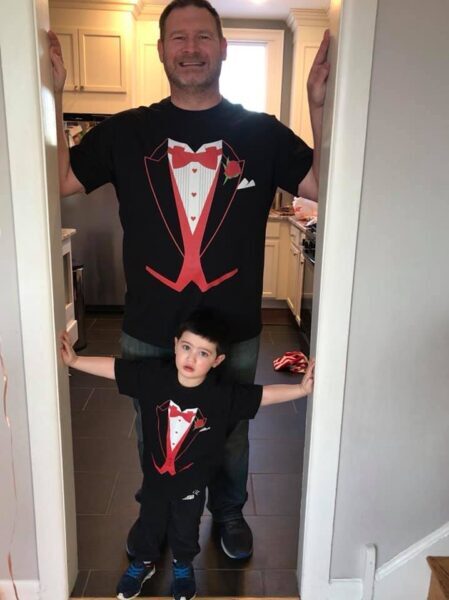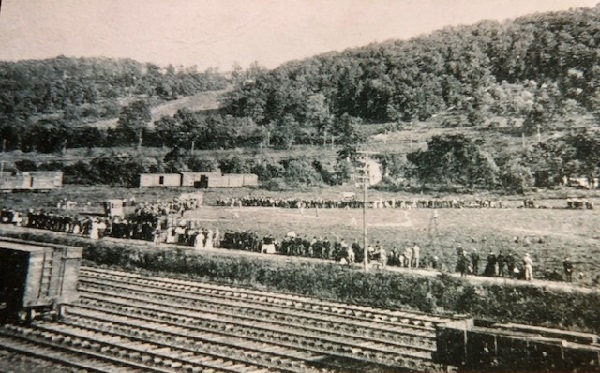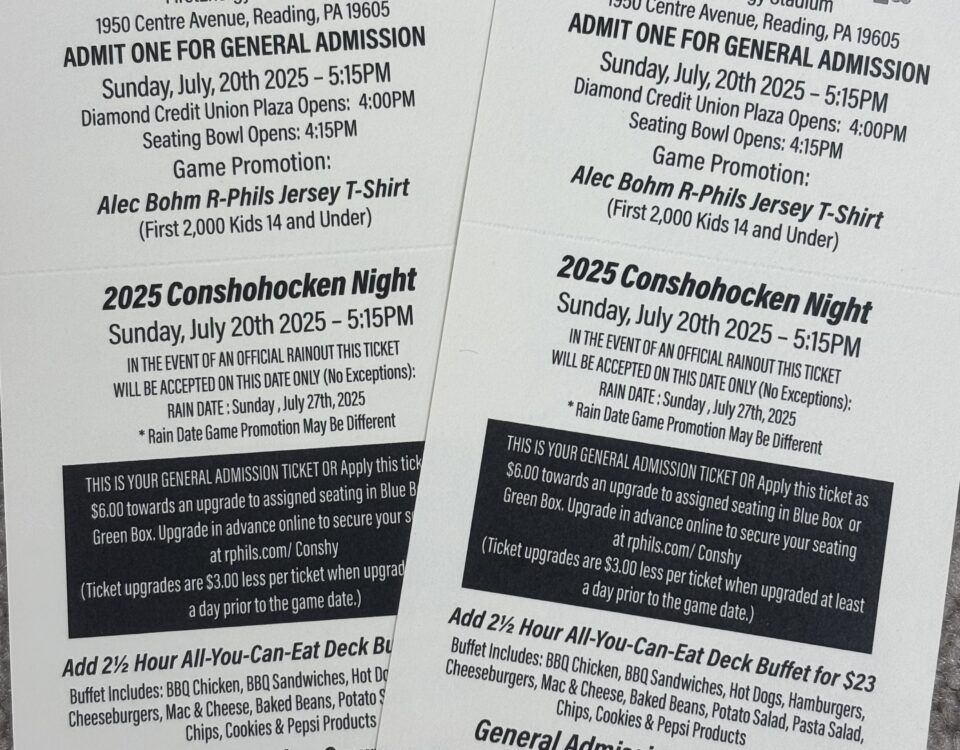
A Lot of Things Different
May 7, 2020
Conshy Art
May 16, 2020Talkin’ Baseball – Conshohocken and Baseball have a History that goes back about 140 years

Talkin’ Baseball
Conshohocken And Baseball Have A History
And That History Goes Back About 140 Years
By Jack Coll
5-10-20
Editor’s Note: This is one in a series of baseball articles, with no baseball due to the coronavirus I’m hoping to fill the small hole in the heart of baseball fans everywhere.
Over the past 140 years Conshohocken has amassed a list of local legends that would rival any town in America. Paul Burton, an outstanding pitcher who signed with the Pittsburgh Pirates, West Conshohocken born Roy “Whitey” Ellam who also pulled a stint with the Pirates, Perk Smith, an outstanding pitcher who was a promising prospect in the New York Giants Farm System, Dave Trail could’ve pitched anywhere in the major Leagues but chose to utilize his many talents in the field of swimming where he collected dozens of medals, Chot Wood could’ve played professional baseball as a pitcher or basketball, Knute Lawler also could’ve played professional baseball or basketball. Then there was Ira “Whitey” Mellor, perhaps the most talented athlete to ever come out of Conshohocken, Whitey signed a contract with Bert Bell to play for the Philadelphia Eagles in the 1930’s, signed a contract with Conshohocken resident Gerald Nugent who owned the Philadelphia Phillies to play shortstop for the Phillies, and later signed a professional contract to play basketball in Canada. You had to know Whitey to appreciate everything I’m saying. Whitey was about 5’6 on his tippy toes and weighed about a buck ten, (110 pounds). If you watched Whitey run the ball on a football field he was one of those Gale Sayers type runners, he would zigzag back and forth across the field running 75 yards to gain 15. He was extremely fast with an uncanny ability to find the open field.

Some history accounts show baseball in Conshohocken was being played as early as the late 1870’s while other records show organized baseball being formed in 1880,either way baseball is the first organized sport to be played in the borough. The first documented organized team was called “The Nerve of Conshohocken.” (Don’t ask me about the name because I have no idea)
I’m sure no-one can recall all the names of the players but the team included Andy Loughery, Johnny Heffelfinger who was a pretty good pitcher, George Buck and Michael McCall both catchers and fielders, Horace Casey, who was a former West Conshohocken Police Officer played first base, John Harrold, who was Conshohocken’s first full time police officer and owner of Harrold’s Hotel once located on West Elm Street and was later sold to the Zalik’s Hotel, John was also a very prominent boxer.
The next documented team in 1880 was a team called “The Aerials,” (Once again don’t ask me where the name came from). Players on this team consisted of Edwin Harrison, Edwin was a hell of a football player, he later had ownership in a steel mill and owned a carpet factory in West Conshohocken. Harrison built his mansion on the corner of East Seventh Avenue and Fayette Street, the house was later used by the Gray’s Ferry Brick Company and in the early 1950’s was demolished to make way the Acme Market, currently CVS. Other members of the team included Dick Clinton, who was later the Mayor of West Conshohocken, Dick Blake who was a well-known resident of Spring Mill, Frank Jones, Mike McDonnell, Mike Rooney, Bill Davis, Jack Gillespie, Hank Ryan, Joe McGuigan, and Fred Wood. Around the same time a team called “The Young Aerials,” formed only this team was made up of players from West Conshohocken led by Lou Pollard.
By the mid 1890’s several athletic clubs had formed in the borough and a number of them formed baseball teams as the sport had become more and more popular in the borough. The Y.M.A.A. (Young Men’s Athletic Association) baseball team in 1897 was hailed as one of Montgomery County’s best teams. Some of the more talented players on the team included Ed Keefe, John Jayes, J. McGrath, Keefe, Joe Dempsey, J. Rigner, J. Riley, T. Crowley, J. McGee, and C. Morgan Fogerty,
In the beginning the ball fields were set up in empty lots, one of the documented lots was Ninth Avenue and Fayette Street and another was Thirteenth Avenue and Fayette Street. As the Conshohocken ball clubs started hosting games with teams from outside the borough more of a permanent field came about down by the river in what became known as “The Meadow.” The Meadow was located between Washington Street and the River at the bottom of Cherry Street. In the early 1970’s Hale Pumps built a foundry on the site of the Meadows. A Sunday afternoon game held at the Meadows could draw hundreds, sometimes thousands of spectators.
The sport of baseball continued to grow. We should note that back in the early days there were no diamonds, the bases were rocks and the playing area was usually a field. There was no catcher’s equipment and most of the fielders didn’t have a glove, and the ones that did when the inning was over would leave the gloves lie on the field and the team taking the field would use the same gloves, keep in mind there was no left handed gloves back then.
By the 1920’s the game of baseball exploded in the borough, the Community Center Field located at East Eleventh Avenue and Harry Street doubled as a baseball/football field closed in by a stockade fence. Teams representing the borough would play their home games there. Then there was the industrial leagues, with dozens of industries many of the mills and factories formed baseball and football teams.
Looking back over the years I found a lot of interesting stories involving our local baseball players including one on Jack Gillespie who was a former West Conshohocken resident. At the time he was noted as being one of this area’s greatest players ever, (I might argue that with the name Roy “Whitey” Ellam). By 1937 Jack was a resident of Reading, Pa and had a job with the Reading Railroad. Honing his skills before the turn of the century on the West Conshohocken sandlots he played on a team called the Old Solar-Tip Nine of Philadelphia. Following his Philadelphia stint he moved to Baltimore with Monte Cross and Kid Gleason to play in the American Association of professional baseball. Several years later Kid Gleason became an assistant with the Philadelphia Athletics under Manager Connie Mack.
Gillespie was a third baseman. A good hitter with a powerful arm and soon became a star with the Baltimore Orioles where he played alongside the famous John McGraw. After McGraw became manager of the New York Giants, Gillespie would visit New York with friends and Mac would send out tickets as soon as he heard his old friend was in town.
Gillespie’s career was cut short when he was hit by a pitch causing a compound fracture on his right thumb. The pitch was thrown by the great Matt Kilroy who went on to become a star with the Athletics.
Gillespie went on to become an umpire in the intercollegiate circles umpiring at such colleges as Villanova, Yale, Harvard, and Pennsylvania among other colleges.
Gillespie had seven brothers including Harry, who was a great athlete in his own right, then there was George who was chief of the Narberth Fire Company for more than thirty years, James, Robert, William and Walter who were all living in Roxborough at the time. (This information came from 1937). Then there was his brother Eddie who for many years was a team trainer for the Pottsville Maroons in the days when Charlie Berry played alongside other greats of the day. Remember Pottsville was the disputed World Champions in the professional football ranks only to be disqualified, another story for another time.
Gillespie was good friends with John and Tom Shibe, former Athletics owners and he was also good friends with William Wrigley, the chewing gum king who owned the Chicago Cubs. He went to school with Wrigley when he lived in Roxborough.
Robert “Perk” Smith was one of the greatest pitchers to ever come out of Conshohocken High school with several professional scouts with an eye on the young hurler. The biggest day in the life of Smith came in September 1931 when he and his coach Robert Grimmett visited Shibe Park and was introduced to the New York Yankees manager Joe McCarthy prior to the game with the Athletics. Smith was introduced to McCarthy by Dr. Bill Brandt of this borough who was a well-known New York sports writer, he also introduced Smith to all the New York Yankees players.
Manager McCarthy provided Smith with a Yankee uniform and had him pitch for some time to Cy Perkins, a former Philadelphia Athletic catcher who was then playing for the Yankees. Smith remained with the Yankees all day. Before the afternoon game he warmed up with Catcher Jorgens and when the team took the field for batting practice he was sent to the mound to pitch. Smith served up batting practice to Babe Ruth, Lou Gerhrig, Dickie and the rest of the Yankee regulars he was taken out of the box and sent to the outfield for fielding practice, Smith was in 11th grade at Conshy High when this happened.
Following graduation Smith played in the New York Giants farm system and was later offered a contract with the Philadelphia Phillies which he turned down. Smith joined the war effort in the early 1940’s and in 1944 was wounded in action, after being hit by a shell he was shot in the side by a Nazi sniper. He recovered in the hospital.
A story from the late Times Herald writer Bill Collins, Bill talked about a game played on Decoration Day in 1923 at the Conshohocken Community Centre Field located at Eleventh Avenue and Harry Street.
“At the time Conshohocken was managed by Jake Hamilton, a town resident and former Montgomery County Sheriff and Ed Harrison, an industrialist who had plants in West Conshohocken. (We mentioned Ed a little earlier in this column), Ed had built his mansion at Seventh Avenue and Fayette Street. Well the two managers read about Lefty Weinert of the Philadelphia Phillies refusing to be traded to the Chicago Cubs, so the pair went to see Weinert they went and signed him to pitch against Lansdale, a big opponent on their schedule. It wasn’t uncommon to sign professional players to play one or two games back in the day, they were called Ringers and got paid well for the game. So Weinert struck out the first nine batters he faced and with the help of an inside the park home run by Jim Hasselbacher, the first baseman, Conshohocken won the game 1-0. It was a thriller and for the rest of the season the Conshohocken nine packed the stadium with paying fans.
Collins went on to note that Ed Harrison was a standout baseball player in his day and played for the Ariels in the mid 1880’s back when the games were played at the Meadow located on Washington Street. Before Harrison built his mansion he lived in West Conshohocken near what would become the Inn of the Four Falls and in order to get to the Meadow for his ball games Harrison had a boat tied up nearby in the Schuylkill. He would row the boat down river and tie it up on the Conshohocken bank just outside the field, he would step out of the boat, tie it up and walk onto the Meadow.
As this article grows longer, (Hey, I’ve got a lot of time on my hands so Im also working on not one but two new books) let’s just mention a few more old time Conshohocken greats who played the game of baseball long before we got here. How about Adam “Cowboy” Rakowski, (He broke slugger Lou Gehrig’s (N Y Yankees) batting record at Columbia University, Dan and Leo Redmond, Walter Grain, Jim McTamney, Bill Custer, Bill “Parry” Murphy, John “Pud” Johnson, Ray “Binkie” Farlie, Sam Webster, Dick Tees, Burt Riker, Max Limbert, Vincent “Bounce” Bonkowski, Earl Link, the Zajac brothers Adam and Aaron, Jim Kriebel, a number of the Kriebels were also standout football players, Ephraim Lake, Knute Lawler, Walter Winterbottom, Sal Marine and a boat-load of other talented ball players.
I’ll catch you next time on Talk’in Baseball, Thanks for the Memories!
The photograph above is of “The Meadow” once located on Washington Street, below Cherry Street. You can see the crowd of spectators ringing the field watching a baseball game. In the early 1970’s Hale Pumps built their foundry on the location of the field, but by that point the field hadn’t been used for sports in over 50 years.

